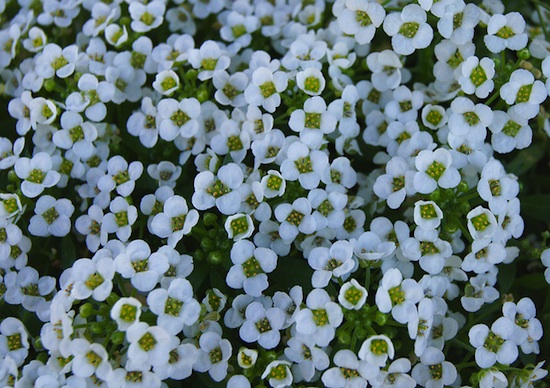Flowers Could Clean Up Polluted Land, Act As Nanoparticle Factories
The alyssum flowers pictured above aren’t just pretty — they’re good for the planet, too. A recent study from the University of Warwick suggests that the common flowers and their relatives could help restore chemically poisoned land to a more livable state by leeching toxins from the ground. As an added bonus, researchers think they could one day harvest those same toxic chemicals — now broken down to tiny nanoparticles — for use in new technologies.
The plan involves planting fairly common plants and flowers that have the ability to pull potentially hazardous elements — like platinum and arsenic — right out of the ground while suffering no ill effects from them. That could return currently poisoned land to…well, probably not quite pristine conditions, but certainly leave the soil healthier than it has been in years. The practice has the potential to fully reclaim some land, letting it serve useful purposes once more.
The team is also looking into new biorefining processes that could harvest chemicals like arsenic and platinum from adult plants as nanoparticles that could be used in many technological applications in the future. While you don’t want them in the land you’re living on or the water you’re drinking, for example, platinum nanoparticles could be an important ingredient for future cancer treatments, meaning that the flower gardens also get turned into, essentially, tiny nanoparticle farms.
As they continue to tune the process, researchers hope they could even one day pull traces of pharmaceuticals out of the ground, leaving healthier soil and communities while providing important resources for technological innovation. All of this research is still on the drawing board at the moment, but we have to say — it sounds pretty great to us.
(via University of Warwick)
- These Pokeball flowers are pretty, but probably not great for the environment
- These high-speed photographed liquid flowers are pretty neat, too
- Some plants are smarter than we give them credit for
Have a tip we should know? tips@themarysue.com
